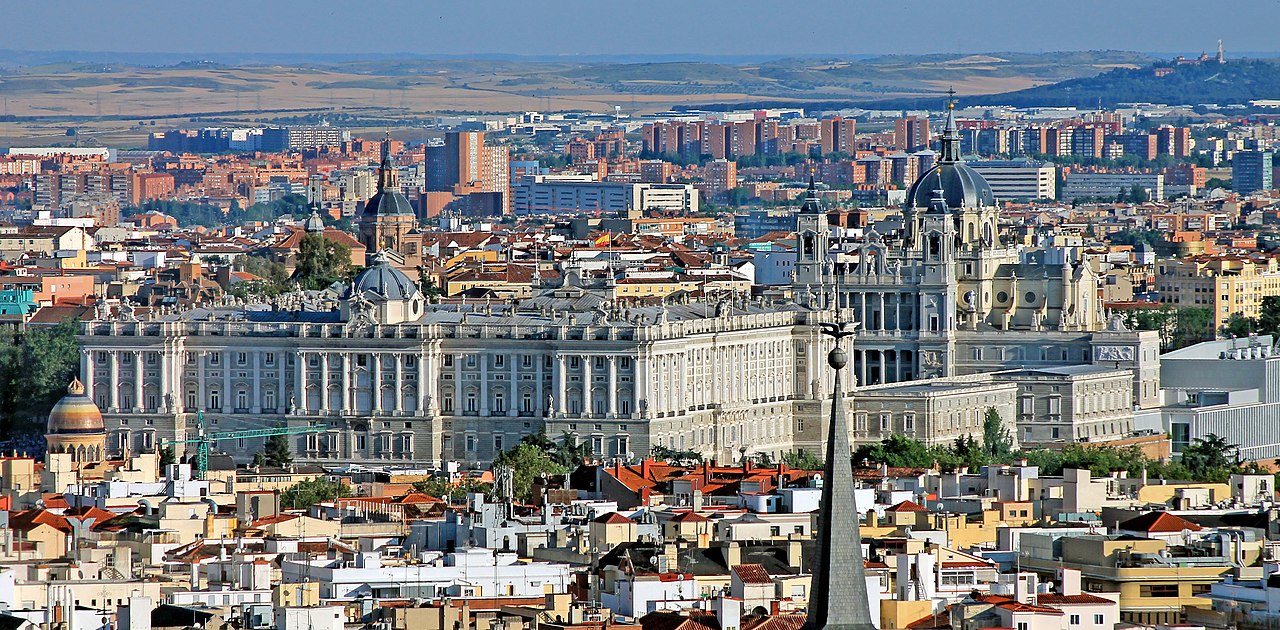
When talking about the neighborhoods in the center of Madrid, the first thing we must do is a clarification. They do not correspond exactly to the popular names that have been given to these central areas of the capital. Thus, tradition divides the center into the Madrid of the Austrias and the Bourbons, the neighborhoods of Lavapies, La Latina, Malasaña y Of letters, as well as the Chueca area.
However, the administrative structure of the center of Madrid is made up of the neighborhoods of Palace, Embajadores, Cuts, Justice, University y SOL. In many cases, a good part of their territory coincides with the previous ones, but not exactly. For all this, when talking about the neighborhoods in the center of Madrid and from what they offer you, we will follow this last nomenclature, which is the official.
Palacio, the largest of the neighborhoods in the center of Madrid
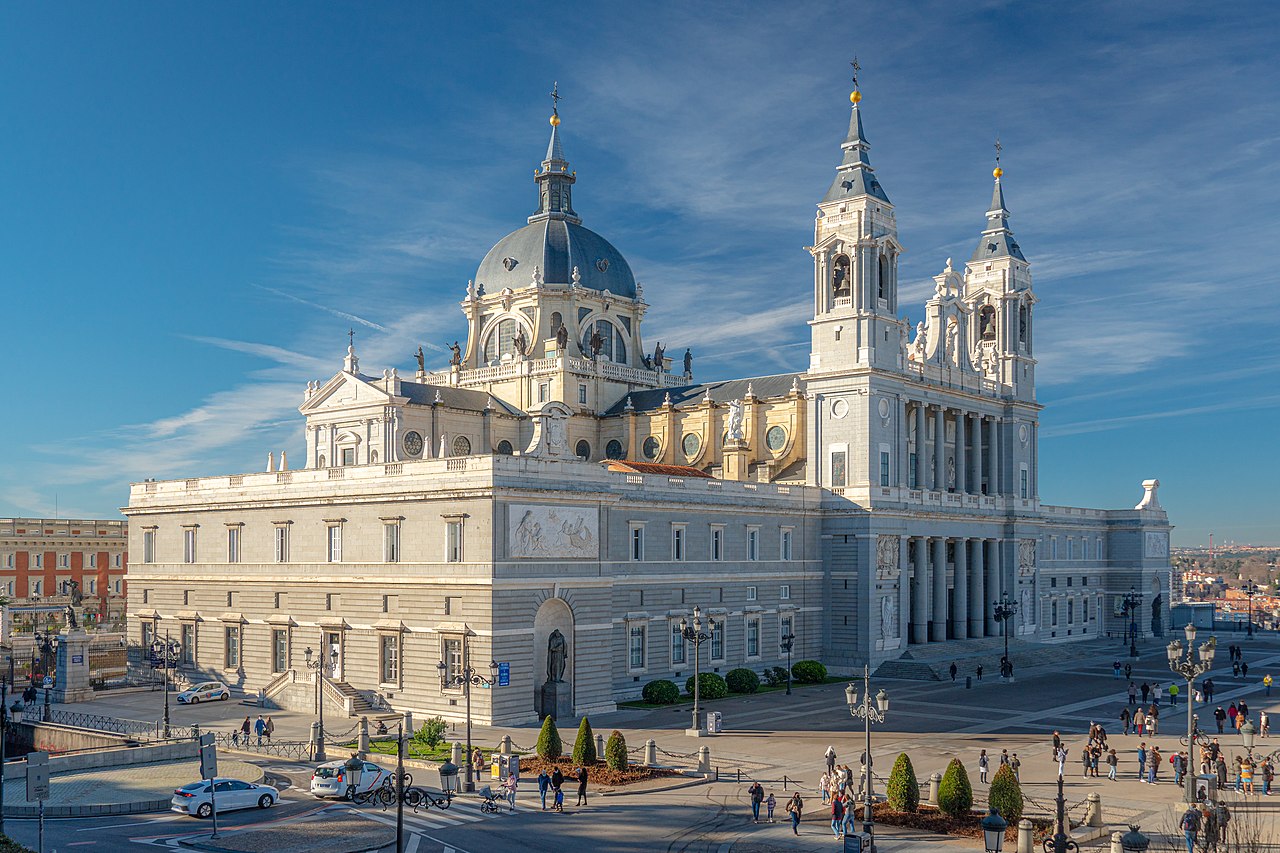
The spectacular Almudena Cathedral
Precisely, this neighborhood includes the Madrid of the Bourbons, much of the the Austrians and the neighborhood of La Latina. It is, as you can see, the largest of those in the center of the capital. Therefore, it will not surprise you that it has numerous monuments and places of interest.
It owes its name, precisely, to the fact that it contains the Royal Palace, also known as the Palace of the East. It was built in the XNUMXth century by order of the king Philip V after the fire that devastated the old Real Alcázar, which occupied the same site. Architects as prominent as Ventura Rodríguez y Francesco Sabati, responsible for its beautiful gardens.
We cannot stop to explain all the wonders of this colossal building. If we did, we wouldn't have space to tell you about other places of interest in this neighborhood. As for the latter, we will quote you, as also worthy of your seeing them, the Altamira palace, of baroque style, the one of the Marquis of Grimaldi and that of the Dukes of Granada de Ega.
But these are not the only civil constructions that attract attention in the area. You should also see the spectacular building of the Royal Asturian Mining Company, a wonder of eclectic style that follows the tastes of the Louis XIII style and is located in the Plaza de España. We can tell you the same about the Gallardo House, a modernist jewel by Federico Arias King.
As for the religious buildings in the neighbourhood, we recommend that you visit the Royal Monastery of the Incarnation, of baroque lines; the Church of Santa Teresa de Jesús and Convent of the Discalced Carmelite Fathers, which has an impressive Hispano-Muslim ceramic dome and the Convent of the Reparadoras. But, above all, we must mention the Almudena Cathedral, an impressive construction 102 meters long by 73 meters wide that combines neoclassical, neo-Gothic and neo-Romanesque styles.
Likewise, the Palacio neighborhood has theaters such as the Lope de Vega, the Coliseum or the Harlequin. And also with green areas such as the gardens of Las Vistillas, the Dalieda of San Francisco or the park of Athens.
Ambassadors neighborhood
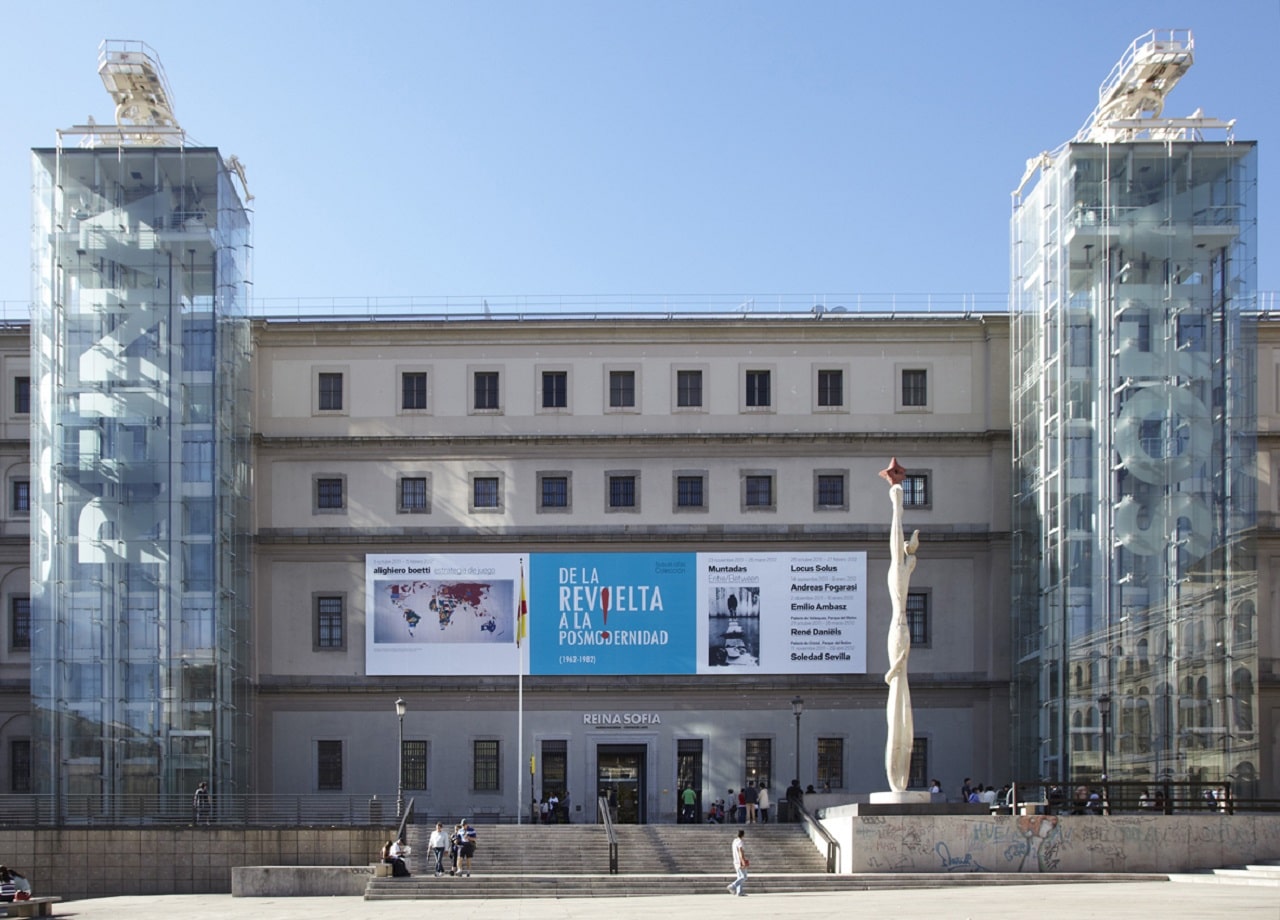
Sabatini Building, of the Reina Sofía National Art Center Museum
Another of the best known among the neighborhoods in the center of Madrid is that of Embajadores, within which is that of Lavapies, which we have mentioned before. As a curiosity, we will tell you that not long ago he was chosen by the magazine Time-out as the most neighborhood cool in the World in recognition of its modernization that has managed to respect the traditional essence.
In Embajadores you have monuments of interest such as the Puerta de Toledo, in neoclassical style and designed by Antonio Aguado; the building of the current Reina Sofía Museum, which was old Hospital of Madrid from the XNUMXth century; the call house on fire, today a cultural center, or the traditional pens from the Lavapiés area.
But, above all, this neighborhood stands out because it houses the famous Trail, where you can go every Sunday. And also for its lively commercial and leisure life. For example, in the Anton Martin square you will find food from all over the world and in the streets you have small shops vintage of all kinds.
But Embajadores is also characterized by its cultural offer. It has theaters such as the Pavón or the Calderón de la Barca, the latter in a beautiful modernist building. There are also several places that offer you alternative shows and, above all, it has the Museo Nacional Centro de Arte Reina Sofía, which we have already mentioned. In it you will find numerous jewels of art from the XNUMXth and XNUMXth centuries. Thus, you can see in its rooms paintings of Picasso, Sorolla, Ignatius Zuloaga and even Francisco de Goya. But also from other geniuses like Kandinsky, Marcel Duchamp o Paul Klee. All this and much more makes this museum one of the essential visits during any stay in Madrid.
Cortes, one of the most spectacular neighborhoods in the center of Madrid
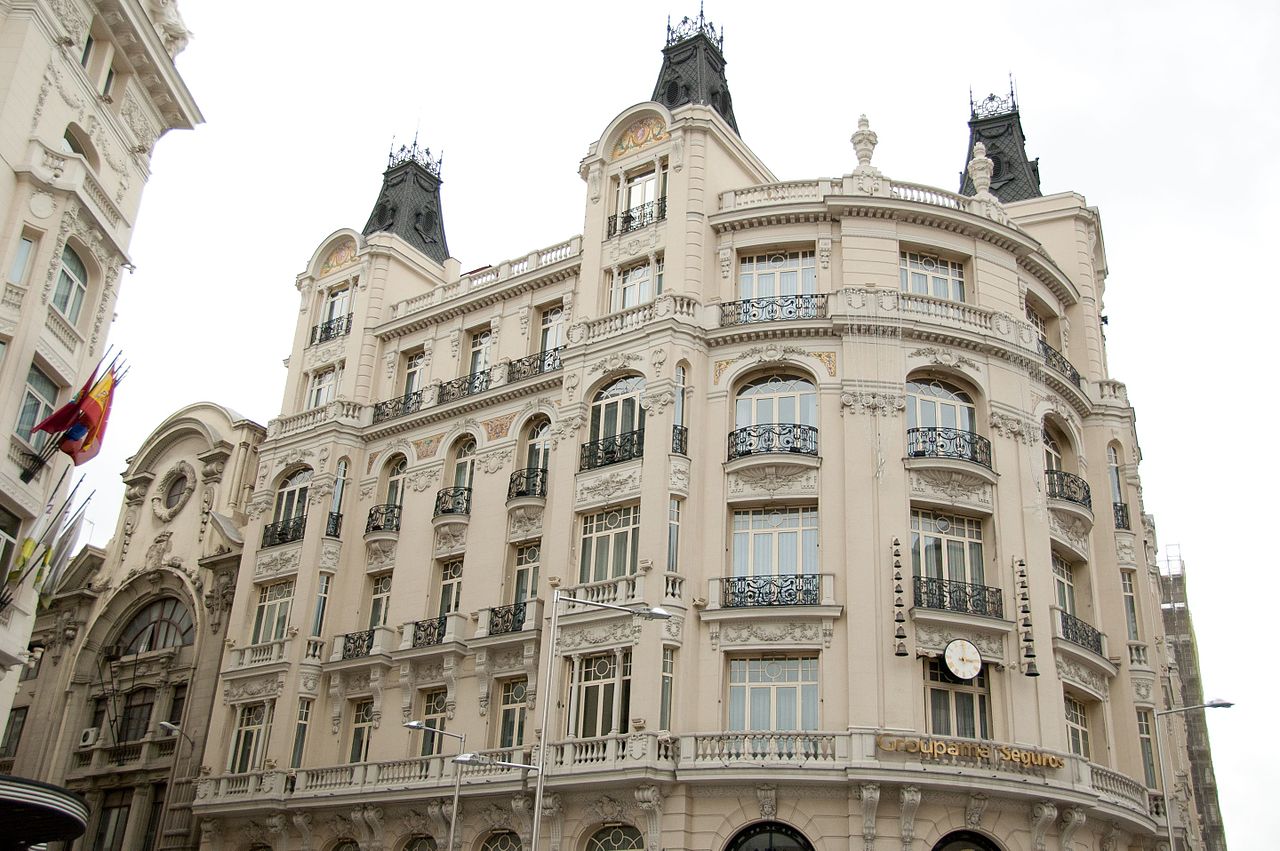
Plus Ultra building, one of the most beautiful in the Cortes neighborhood
We now pass to the neighborhood where the Palace of the Courts, hence its name. However, in line with what we told you at the beginning of the text, it also includes the so-called neighborhood of the letters or orchards. It is limited by the Paseo del Pardo and the streets of Atocha, Alcalá, de la Cruz, Seville, the Virgen de los Peligros and the Gran Vía.
It would be impossible for us to tell you about all the monuments that this neighborhood has. Therefore, we will mention only a few. Among the palaces, we advise you to see those of Goyeneche, of La Equitativa, of the Marquis of Miraflores or the Count of Tepa. Along with them, you have other spectacular civil constructions such as the Plus Ultra Building, with its carillon; the one from Hotel Palace; the one of Bank of Spain, the singular grassy building or houses of Cervantes, of the Mesta, of the count of Guaqui or by Lope de Vega.
As for the religious monuments in the neighbourhood, it is essential to mention the Churches of San Ignacio de Loyola, San Sebastián and Las Calatravas, the latter a jewel of the Spanish Baroque, although its façade, renovated in the XNUMXth century, belongs to the neo-Renaissance style. In short, they complete the monumental heritage of Embajadores theaters such as the Alcázar, the Spanish, the Reina Victoria or the Comedy.
Justice District

Former convent of the Salesas Reales, today the seat of the Supreme Court
We now come to the Justice neighbourhood, whose name is due to the fact that it has historically housed the headquarters of the Courts of Accounts and the Supreme Court. It is framed by Génova and Sagasta streets to the north, Gran Vía and Alcalá to the south, Fuencarral to the west and Paseo de Recoletos to the east. Also, within it is the Chueca area, which has gained great popularity in recent decades among the gay community.
It also offers you monuments of interest. It is the case of Longoria Palace, today the current headquarters of the General Society of Authors and Publishers. It is a beautiful modernist building designed by the architect Jose Grases Riera. They also deserve to be seen Palace of the Count of Villagonzalo, Lizard House, so called because of the reptiles that adorn its cornice and the Papelera Española building, another jewel of modernism.
But are not the only ones. To the list we must add the Buena Vista Palace, built in the XNUMXth century as a gift to Felipe II; The seat of the Supreme Court, conceived in the XNUMXth century as Convent of the Royal Salesas and residence for the queen dowager Barbara of Braganza, as well as the Cervantes Institute building, with its huge caryatids.
But one of the obligatory visits in the Justicia neighbourhood, if you are interested in history and literature, is the Romantic Museum. It is located in the precious house-palace of the Marquis of Matallana, a construction from the end of the XNUMXth century. As for the religious monuments in the area, we advise you to see the Churches of San Antón, Santa Bárbara and San José, all from the XNUMXth century, as well as the Cachito de Cielo chapel.
Character very different from the previous constructions has the House of the Seven Chimneys. This beautiful XNUMXth century Renaissance palace has so much history that it has given rise to numerous legends. In short, if you visit the neighborhood of Justicia, be sure to walk through the Paseo de Recoletos, which joins the squares of Colón and Cibeles, nor to enjoy the tapas bars full Santa Barbara Square.
Sol, central between the neighborhoods of the center of Madrid
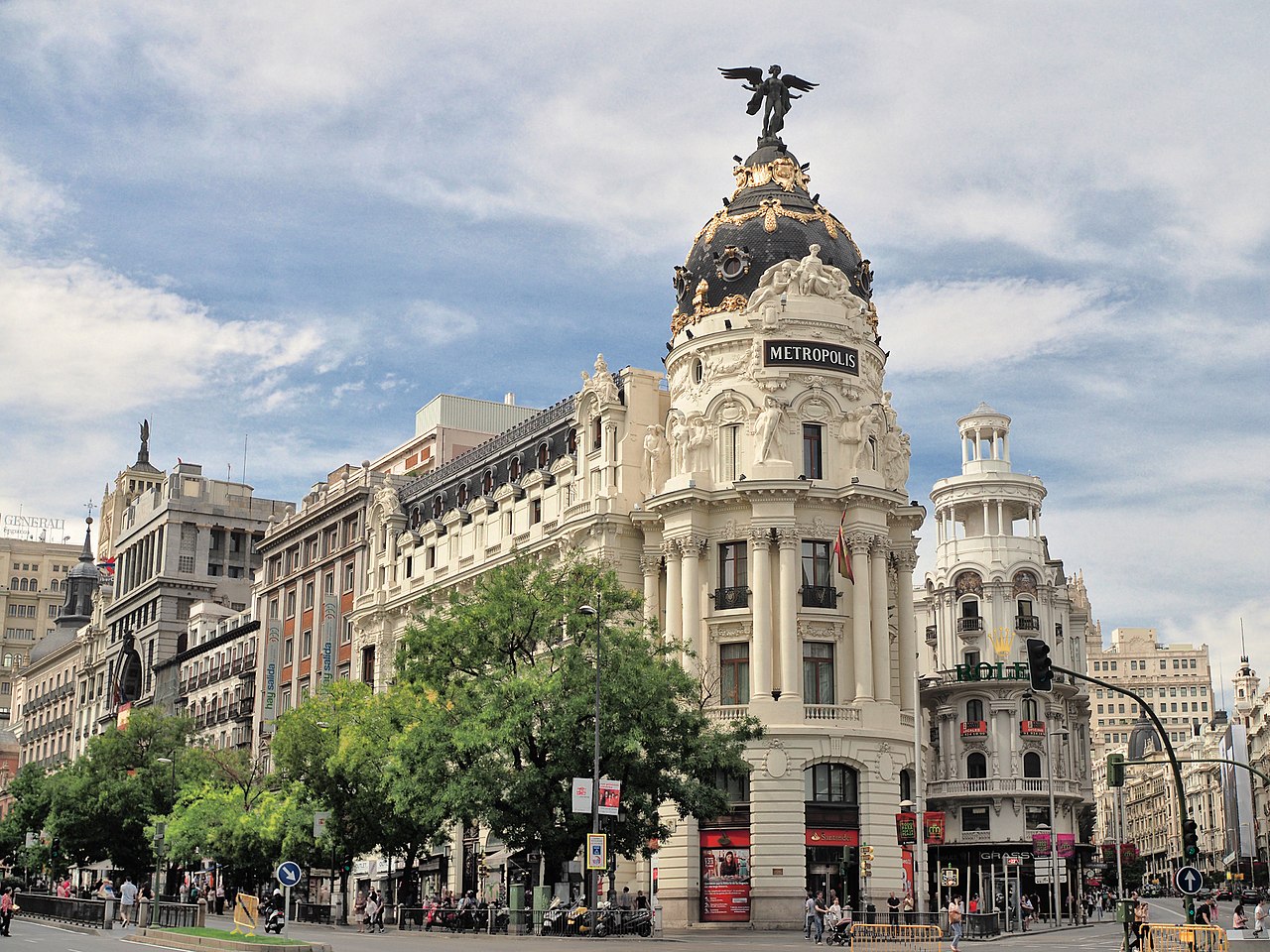
The impressive Metropolis building
If we are talking about neighborhoods in the center of Madrid, we have to stop at Sol, because, in addition, it houses the kilometer zero of Spanish roads. This is exactly in the Puerta del Sol, one of the most popular squares in Spain. In it, in addition, the building of the Royal Post Office, built in the XNUMXth century and whose clock marks the beginning of each new year. They surround it Royal Post House or Pontejos barracks, in neoclassical style, and the Lamb House, considered one of the most representative civil works of Madrid in the mid-nineteenth century.
But, without a doubt, the great attraction of this neighborhood is the Plaza Mayor. It is due to the talent of Juan de Herrera, who was commissioned to Felipe II in the middle of the XNUMXth century. It highlights the Bakery House, the oldest building in the complex; the Knife Bow, which is his most famous access, and the equestrian statue of Philip III, work of John of Bologna, which dominates the square from the center.
You can also see in this neighborhood the Santa Cruz Palace, headquarters of the Ministry of Foreign Affairs; theaters like the one of the Zarzuela and buildings like the metropolis, with its slate dome adorned with gold leaf and its sculptures of Mariano Benlliure. The latter is one of the many architectural gems offered by the Gran Vía, in which is also the Knight of Grace Oratory, an XNUMXth century temple.
In conclusion, we have shown you the main neighborhoods in the center of Madrid. We should have also included the university, originally known as Maravillas and where the popular malasana area, one of the most lively and authentic in the city. Get to know these central areas of Madrid. As you have seen, they have a lot to offer you.